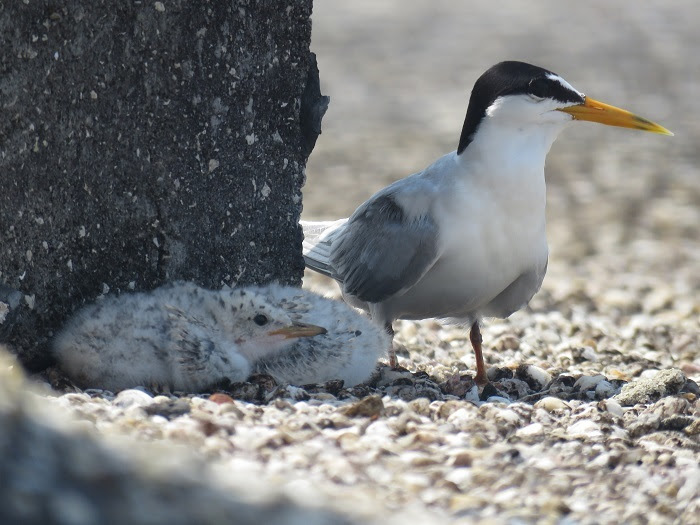Making concessions for wildlife is not always easy but it is extremely important for the long-term survival of rooftop nesting birds, such as least terns and black skimmers. The Florida Fish and Wildlife Conservation Commission (FWC) thanks building owners for hosting shorebirds and seabirds that nest on their roofs from March through August.
Florida is home to unique shorebirds and seabirds that typically nest on the ground of open beaches, but as more people visit these destinations, these birds are increasingly using gravel rooftops to nest and raise chicks.
Most shorebirds and seabirds that nest on rooftops are State-threatened species. For example, more than 50% of Florida’s least tern population relies on rooftops for nesting grounds. Any harassment or harm, even unintentional, is considered “take” and is therefore unlawful.
What can you do to help rooftop nesting birds?
Thank building owners. If you are staying at a hotel or visiting a business that has rooftop nesting birds, thank management for accommodating these fellow guests.
Volunteer. You can help the FWC monitor rooftop nesting locations for evidence of nesting activity and for fallen chicks that need to be returned to the rooftop. Contact us for opportunities in your area by emailing: Shorebird@MyFWC.com.
Building owners and managers play an important role. If you own or manage a building where birds are nesting on the roof, you can help by giving the nesting birds space and contact an FWC Regional Shorebird Biologist for assistance.
“Rooftops can play such an important role in the nesting season for these birds,” said Melissa Tucker, director of FWC’s Division of Habitat and Species Conservation. “We want to recognize all the building owners and managers who accommodate these birds, helping the long-term survival of these species.”
“These ‘islands in the sky’ are essential to ensuring the future of our iconic coastal species,” said Julie Wraithmell, executive director of Audubon Florida. “Every roof counts as Florida loses ground nesting sites to sea level rise and disturbance.”
For more information, go to MyFWC.com/Shorebirds and click on “Rooftop Nesting”.
Spring is an active time for many of Florida’s wildlife species. For more information on wildlife in Spring, visit MyFWC.com/News and click on “Spring Wildlife News.”







